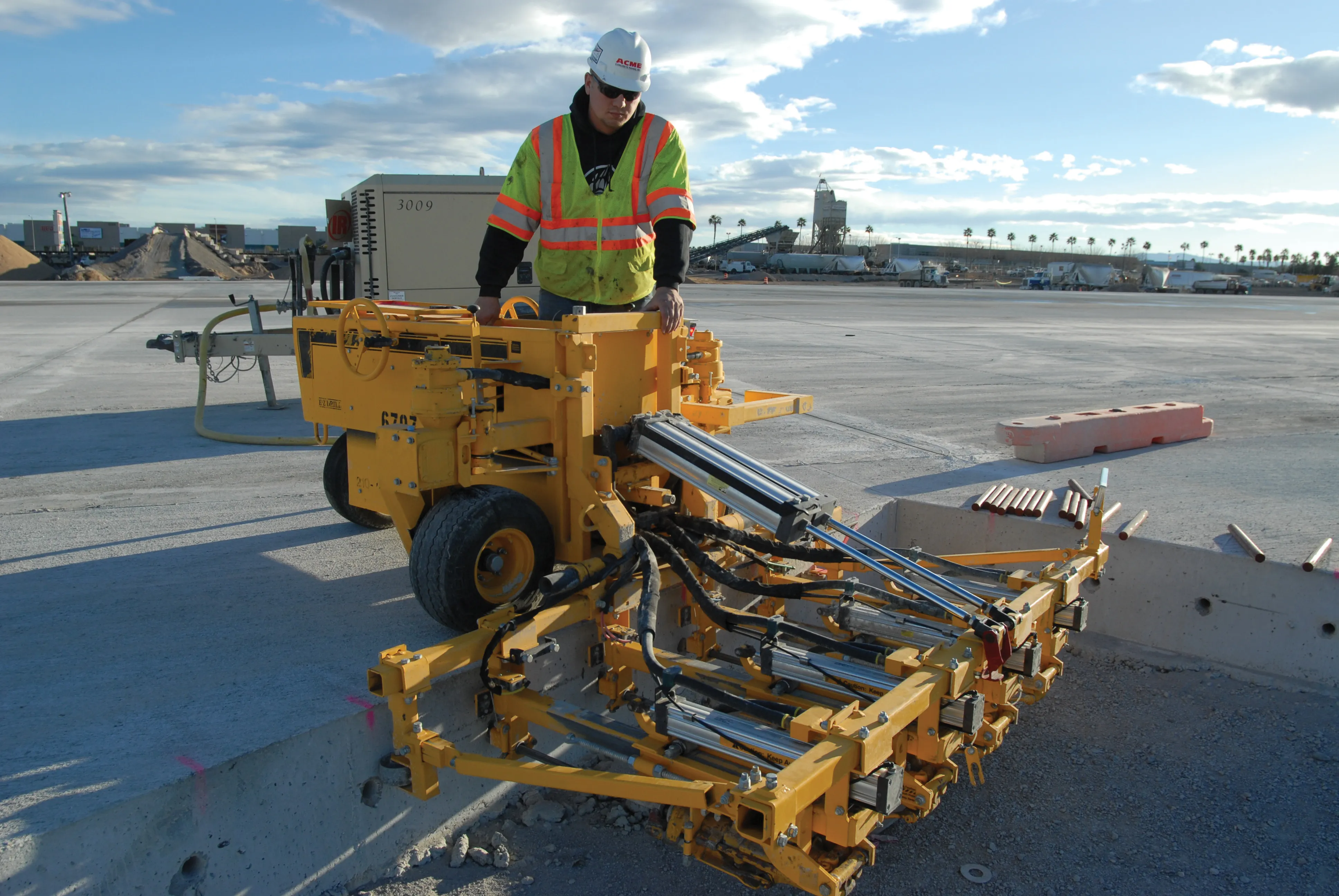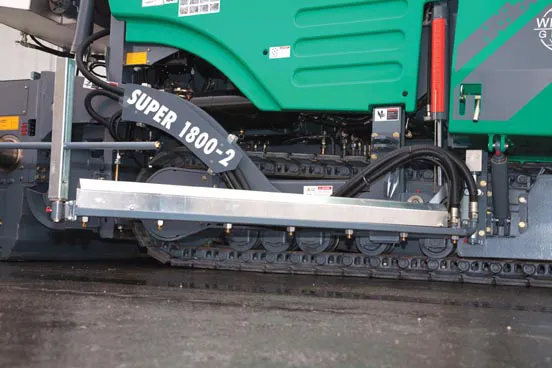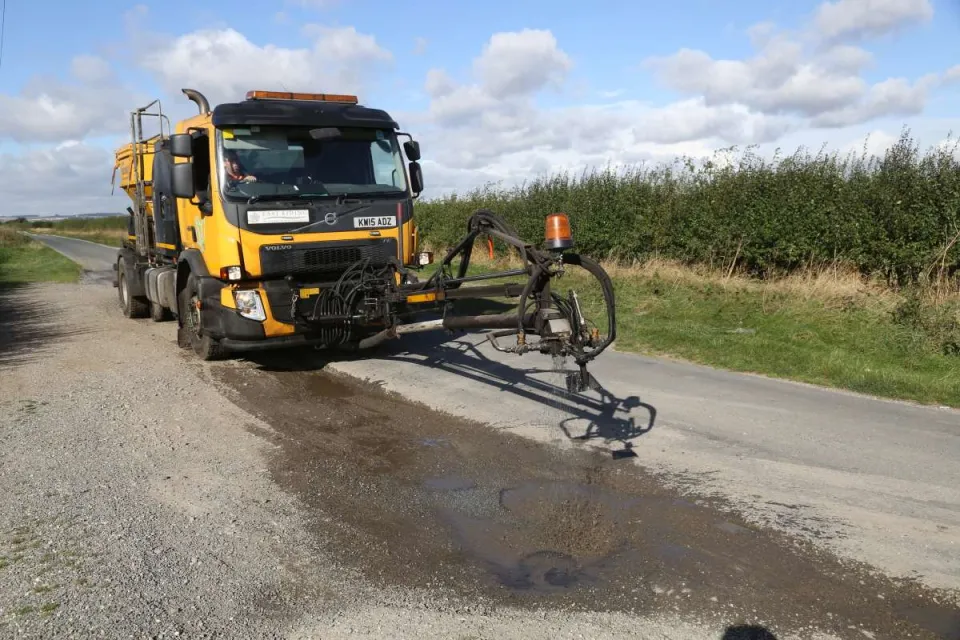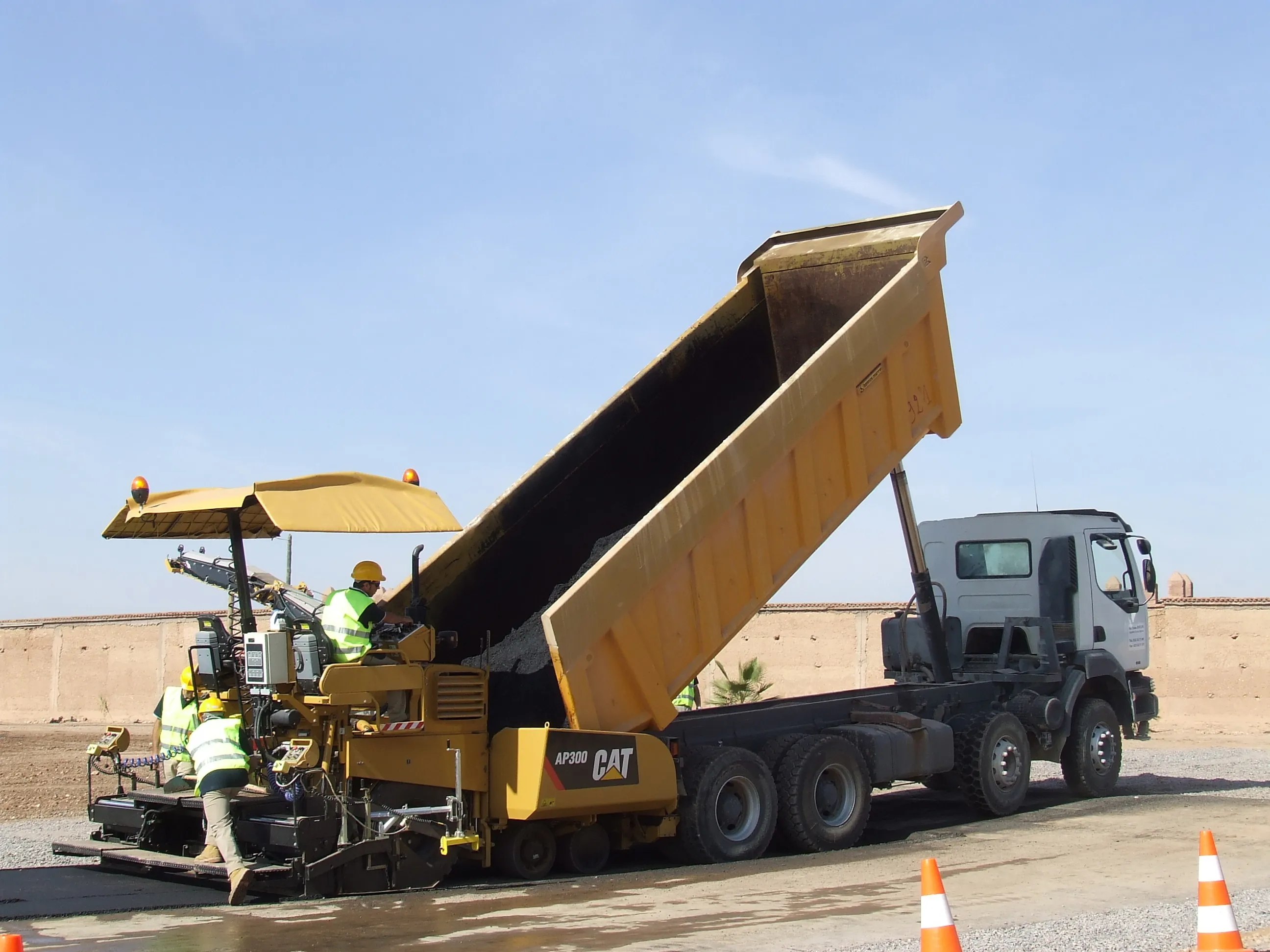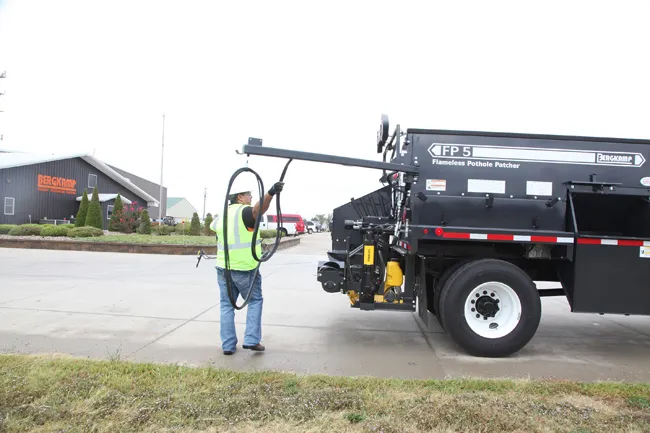
Tack that is sprayed into potholes to increase adhesion within a patch can also adhere to your equipment hoses. In addition, the hoses can present jobsite tripping hazards. To address these common issues,
Located at the back-right side of the FP5’s hopper body, the system’s pivoting arm holds the original tack hose off of the ground and parallel to the hopper, locked in place for transporting with a spring-loaded pin. When in use, the pivot arm also locks into position, allowing the operator to keep the hose suspended and off of the ground. This eliminates a trip hazard, as well as the chance of dragging the hose through wet tack.
The pivot arm and hose system has a 180° pivot capability and provides just over 6m of overall extended reach with the tack wand. A retrofit Pivot Tack/Air Hose System can be mounted on existing FP5 Pothole Patchers.
The updated Pivot Tack/Air Hose System is one of the many ways in which Bergkamp says that its FP5 All-In-One Pothole Patcher not only carries all of the necessary equipment needed for a full day of pothole repair work, but allows a crew to work safely and efficiently.
Bergkamp is a global company based in Salinas, in the US state of Kansas. The company has been manufacturing truck-mounted, trailer-mounted and continuous slurry seal and micro surfacing pavers and equipment, as well as spray injection and pothole patching equipment since 1977.


